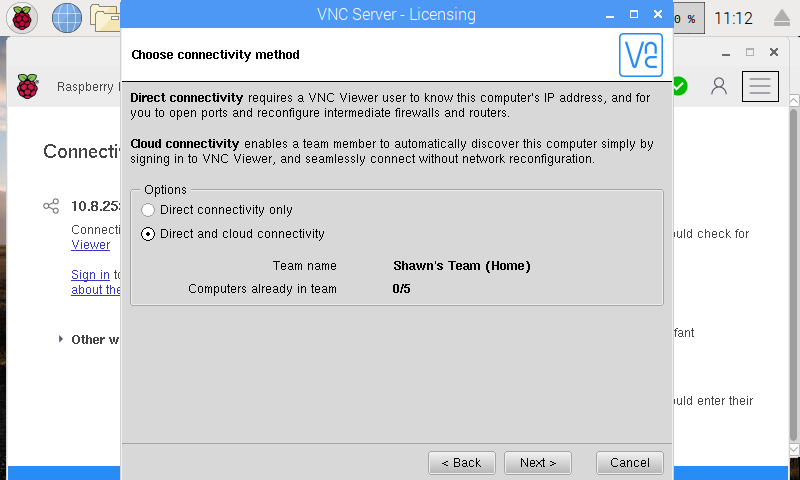

- Raspberry pi vnc server on boot install#
- Raspberry pi vnc server on boot full#
- Raspberry pi vnc server on boot software#
- Raspberry pi vnc server on boot password#
usr/bin/vncserver :0 -geometry 1280x800 -depth 16 -pixelformat rgb565Įcho "Usage: /etc/init.d/vncboot " #Insert your favoured settings for a VNC session # Description: Start VNC Server at boot time. # Short-Description: Start VNC Server at boot time Vncserver :0 -geometry 1920x1080 -depth 24 -dpi 96Ĭreate a file in /etc/init.d with a suitable name such as vncboot with the following content. $ nano svnc.sh (call the file whatever you like) Or you could create a script to save typing in the whole thing. (If fonts appear the wrong size, add '-dpi 96' to the end.)
Raspberry pi vnc server on boot full#
This example starts a session on VNC display zero (:0) with full HD resolution: Once that is done you can start a VNC server from the shell prompt.
Raspberry pi vnc server on boot password#
Next Run TightVNC Server which will prompt you to enter a Password and an optional View Only Password
Raspberry pi vnc server on boot install#
Log in to your Pi and install the Tight VNC Package
Raspberry pi vnc server on boot software#

7 Getting VNC Server to Work on a Specific User.Strangely, the Apple Remote Desktop app still does not discover my VNC server using bonjour. Other VNC software should be able to discover it also, though I’ve only tested it on Mocha VNC for iPad. Click this and the Screen Sharing app will open, enter your VNC password (leave the username blank). You should now see a “Share Screen…” button when you select your Raspberry Pi in the Finder side bar. If your Mac doesn’t pick it up within a view minutes, restart the avahi service: “ sudo /etc/init.d/amon restart”.Press ctrl and x to exit, then y to save and press return after confirming the file location.Under the element in step three, ensure you enter the correct port number that you chose when starting your VNC server.Run “ sudo nano /etc/avahi/services/rfb.service”.To do this, add a new service under /etc/avahi/services. If you’ve followed my previous post to setup Avahi for AFP auto discovery, you might want to do the same for VNC.


 0 kommentar(er)
0 kommentar(er)
